Cook the Books - The New Nordic
Photography by David Parker .
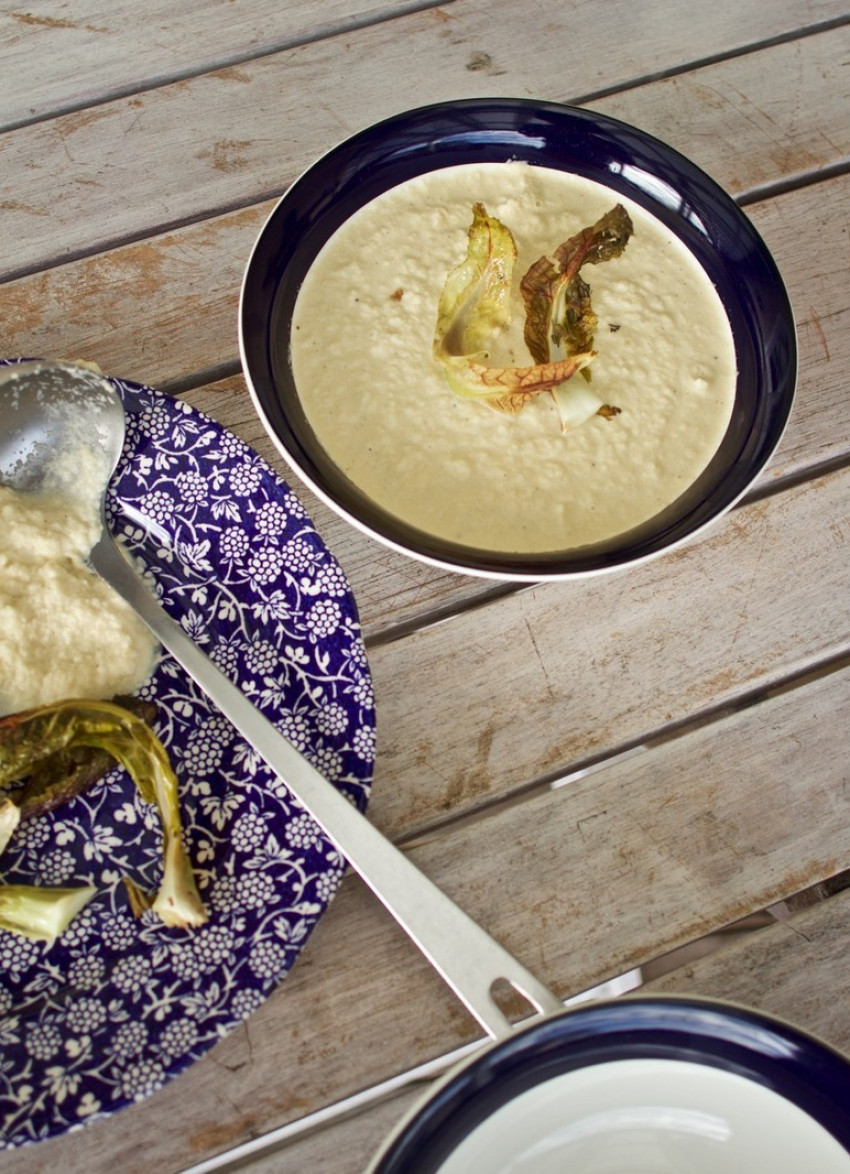
David Parker ventures into the world of Scandinavian cuisine for a second time in order to review 'The New Nordic' by Simon Bajada. Like cauliflower? You'll love this soup, it's just a pity that David doesn't...
Nordic cuisine, it seems, is the new black. With renowned Danish restaurant Noma and other Nordic restaurants topping best restaurant lists, the world is starting to pay attention, book publishers too apparently. I reviewed Scandinavian Baking a few months back and was contemplating attempting something from Noma's own book but The New Nordic takes a more attainable, less fancy approach to creating Scandinavian food at home; in their own words “no pacojets or dehydrators”, or even meat cooked in plastic bags in a water bath. There are dinner party-worthy dishes alongside porridges, fritters and meatballs - everyday food done well.

When flipping through the pages I couldn't look past the Baked Cauliflower and Juniper Soup, a crisp white with gorgeous burnt leaves as garnish, it was unlike anything I'd seen before. I wasn't sure how it would taste, especially with the powerful flavour of juniper berries. Despite not being a cauliflower fan in general I love a good cauliflower puree. Plus it suggested serving with a rye bread, the recipe for which is further on in the book and I still had rye flour left over from one of my first columns. I wasn't too happy with that bread recipe, it hadn't risen or cooked properly so I was hoping that this 'Simple Rye Bread' recipe would work better.

I started off by soaking the sunflower seeds, linseeds and cracked (or kibbled) rye and, in a separate bowl, I added yeast and water to rye flour and covered both bowls with a damp tea towel. The next day they looked suspiciously dry.
I wasn't feeling confident about the two dry mixtures as the only other remotely wet ingredient to be added was golden syrup, but I decided to see what happened when they were combined. I added the syrup, salt, and a spoonful of dark brown sugar (as a substitute for not having malt). The dough turned out to be VERY wet, no need to have worried about it drying out! I'm glad I opted to mix this in a stand mixer instead of kneading on the bench as I would no doubt have managed to get sticky rye bread dough everywhere.

I doubted the recipe at this point. No amount of sunflower oil was going to stop this dough from sticking to the loaf tin, especially not after it had proved it in. My epitaph should read “I knew the sunflower oil wouldn't work”. It rose just like the recipe said it would and I was very happy, however I sense the next move was my downfall. I put the loaf into the very little oven (we just got a new double oven and the little oven is at the top and I keep using it for baking by mistake and it just isn't as good as the big oven but slightly more convenient; it's a trap). At first everything seemed to be going very well - the bread rose even more and crust was looking great - but when I had a look through the glass halfway through baking it had sunk in the centre.
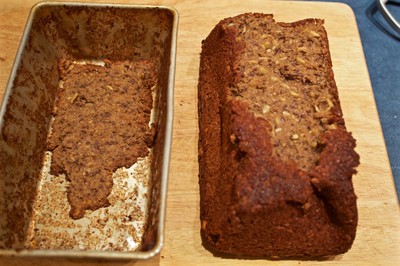
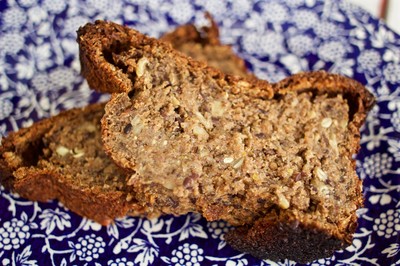
When I tried to pull the bread out and inevitably struggled with removing it from the loaf tin, the bottom stuck in the tin much as I expected, but it looked uncooked inside the loaf. It was very disappointing. The recipe says to let it cool and that it will continue to cook in this time, but an hour or two later there was no change. I think something to do with the small oven killed it. I don't know. The crusts were delicious, it's just a shame I didn't have a whole loaf to enjoy.

I pushed on and started the soup. I crushed juniper berries with some salt in a pestle and motar and rubbed it over the cauliflower with rapeseed oil, then roasted it in the oven. The smell of cauliflower roasting isn't one of those pleasant homely food smells, it's akin to boiled cabbage and the smell permeated the whole house.
The cauliflower wasn't as tender as I imagined it needed to be, so I put it in for a while longer as suggested by the book. Then, after cutting it into small florets, it was ready to blend.

I began to pour in vegetarian stock (not chicken as specified by the recipe to appease the vegetarians of the house) and used a stick mixer to blend it up. Then I browned some butter.
Apparently browning butter makes all the difference, giving it a nuttier, caramel flavour. In the book there is a separate recipe for 100 grams of browned butter but I only needed 50 grams for the soup so I just browned that amount in a pan, it was pretty easy, you just heat it slowly until it goes brown! After adding the butter, some black pepper (I didn't have white, but I'm sure black will do fine) and crème fraiche it was done. Time to taste!
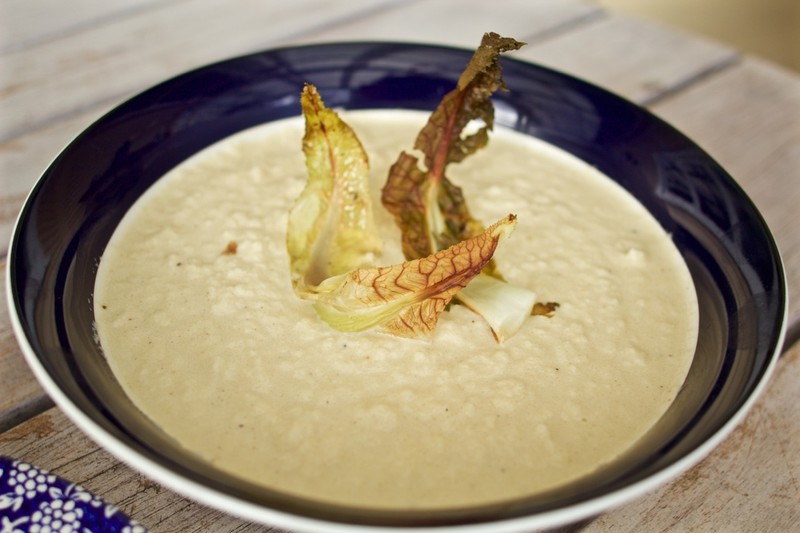
I've never had cauliflower soup before. I'm not sure what I was expecting really, I'm not a huge cauliflower fan, but I love a good cauliflower purée...I apparently do not love cauliflower soup. It was very thick, almost a puree, very heavy and so cauliflower-y but at the same time so bland. The flavour haunted me for a few hours later, I don't know if you've ever experienced cauliflower soup burps but I have and they weren't pleasant. I tried to put on a brave face as I attempted to foist off the soup on unsuspecting family members “Oh did you want a bowl of cauliflower soup? It kind of tastes okay...” - they would cautiously take a spoonful and dismiss it. Eventually I abandoned my bowl of soup halfway through. I admitted defeat and the soup went down the drain, but we fought over the rye bread crusts.
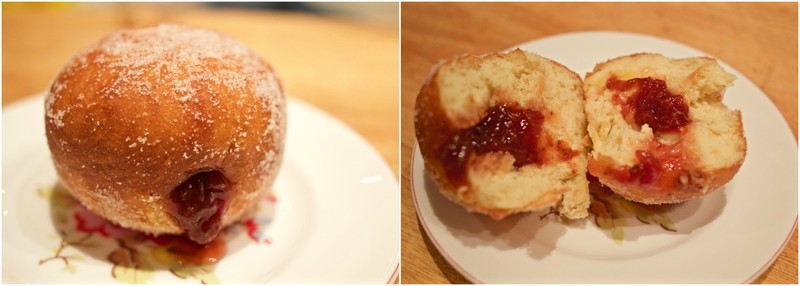
Feeling defeated I decided I needed a pick me up and that evening whipped up a batch of doughnuts (using this recipe) to great success. I am not a failure! I can cook things!

The New Nordic by Simon Bajada is published by Hardie Grant Books, RRP $45. It is available from all good book stores nationwide.
latest issue:
Issue #120
As the days become shorter, and the nights cooler, the latest issue is perfectly timed to deliver delicious autumn dishes. From recipes using fresh seasonal produce such as feijoas and apples, to spectacular soothing soups and super-quick after-work meals in our Food Fast section, we’ve got you covered. With Easter on the horizon, we feature recipes that will see you through breakfast, lunch and dinner over a leisurely weekend holiday, and whip up chocolatey baking treats sure to please. We round up delicious dinners for two and showcase a hot new Korean cookbook before heading south to Dunedin to check out all that’s new in food and dining.The latest issue of dish is on sale NOW at all good bookstores and supermarkets – don’t miss it!

